Nor Shahida Mohd Shah
Flexible Beamforming in B5G for Improving Tethered UAV Coverage over Smart Environments
Jul 14, 2023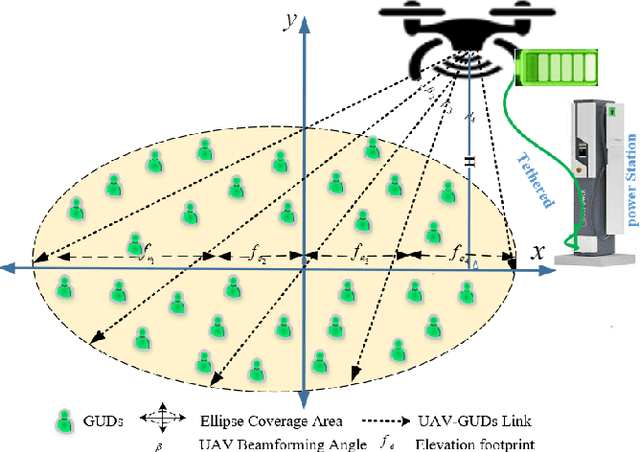
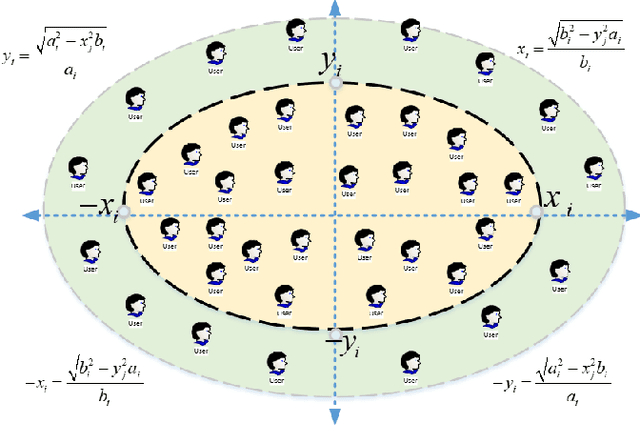
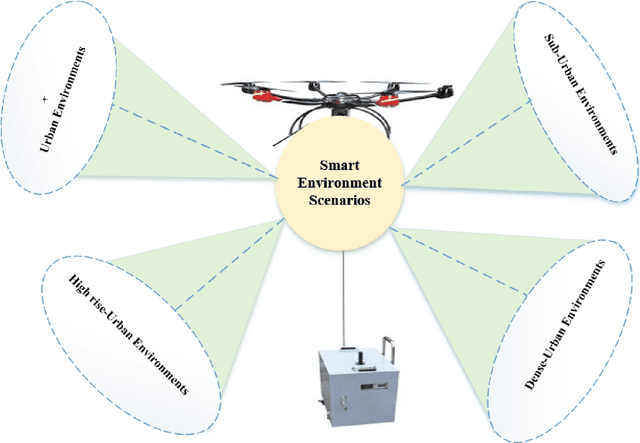
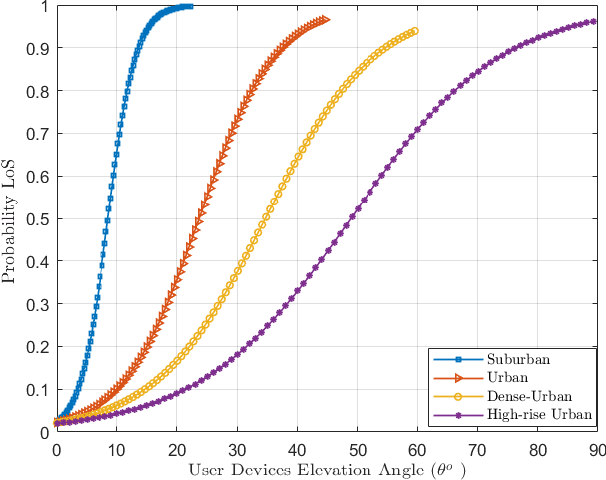
Abstract:Unmanned Aerial Vehicles (UAVs) are being used for wireless communications in smart environments. However, the need for mobility, scalability of data transmission over wide areas, and the required coverage area make UAV beamforming essential for better coverage and user experience. To this end, we propose a flexible beamforming approach to improve tethered UAV coverage quality and maximize the number of users experiencing the minimum required rate in any target environment. Our solution demonstrates a significant achievement in flexible beamforming in smart environments, including urban, suburban, dense, and high-rise urban. Furthermore, the beamforming gain is mainly concentrated in the target to improve the coverage area based on various scenarios. Simulation results show that the proposed approach can achieve a significantly received flexible power beam that focuses the transmitted signal towards the receiver and improves received power by reducing signal power spread. In the case of no beamforming, signal power spreads out as distance increases, reducing the signal strength. Furthermore, our proposed solution is suitable for improving UAV coverage and reliability in smart and harsh environments.
An Efficient Game Theory-Based Power Control Algorithm for D2D Communication in 5G Networks
Mar 08, 2023Abstract:Device-to-Device (D2D) communication is one of the enabling technologies for 5G networks that support proximity-based service (ProSe) for wireless network communications. This paper proposes a power control algorithm based on the Nash equilibrium and game theory to eliminate the interference between the cellular user device and D2D links. This leads to reliable connectivity with minimal power consumption in wireless communication. The power control in D2D is modeled as a non-cooperative game. Each device is allowed to independently select and transmit its power to maximize (or minimize) user utility. The aim is to guide user devices to converge with the Nash equilibrium by establishing connectivity with network resources. The proposed algorithm with pricing factors is used for power consumption and reduces overall interference of D2Ds communication. The proposed algorithm is evaluated in terms of the energy efficiency of the average power consumption, the number of D2D communication, and the number of iterations. Besides, the algorithm has a relatively fast convergence with the Nash Equilibrium rate. It guarantees that the user devices can achieve their required Quality of Service (QoS) by adjusting the residual cost coefficient and residual energy factor. Simulation results show that the power control shows a significant reduction in power consumption that has been achieved by approximately 20% compared with algorithms in [11].
Development of A Fully Data-Driven Artificial Intelligence and Deep Learning for URLLC Application in 6G Wireless Systems: A Survey
Aug 04, 2021



Abstract:The full future of the sixth generation will develop a fully data-driven that provide terabit rate per second, and adopt an average of 1000+ massive number of connections per person in 10 years 2030 virtually instantaneously. Data-driven for ultra-reliable and low latency communication is a new service paradigm provided by a new application of future sixth-generation wireless communication and network architecture, involving 100+ Gbps data rates with one millisecond latency. The key constraint is the amount of computing power available to spread massive data and well-designed artificial neural networks. Artificial Intelligence provides a new technique to design wireless networks by apply learning, predicting, and make decisions to manage the stream of big data training individuals, which provides more the capacity to transform that expert learning to develop the performance of wireless networks. We study the developing technologies that will be the driving force are artificial intelligence, communication systems to guarantee low latency. This paper aims to discuss the efficiency of the developing network and alleviate the great challenge for application scenarios and study Holographic radio, enhanced wireless channel coding, enormous Internet of Things integration, and haptic communication for virtual and augmented reality provide new services on the 6G network. Furthermore, improving a multi-level architecture for ultra-reliable and low latency in deep Learning allows for data-driven AI and 6G networks for device intelligence, as well as allowing innovations based on effective learning capabilities. These difficulties must be solved in order to meet the needs of future smart networks. Furthermore, this research categorizes various unexplored research gaps between machine learning and the sixth generation.
Optimal Transmit Power and Antenna Selection to Achieve Energy Efficient and Low Complexity in fifth generation Massive MIMO Systems
Jun 04, 2021
Abstract:This paper investigates joint antenna selection and optimal transmit power in multi cell massive multiple input multiple output systems. The pilot interference and activated transmit antenna selection plays an essential role in maximizing energy efficiency. We derived the closed-form of maximal energy efficiency with complete knowledge of large-scale fading with maximum ratio transmission while accounting for channel estimation and eliminated pilot contamination when the antennas approach infinity. We investigated joint optimal antenna selection and optimal transmit power under minimized reuse of pilot sequences based on a novel iterative low-complexity algorithm for Lagrange multiplayer and Newton methods. The two scenarios of achievable high data rate and total transmit power allocation are critical to the performance maximal energy efficiency. We propose new power consumption for each antenna based on the transmit power amplifier and circuit power consumption to analyze exact power consumption. The simulation results show that maximal energy efficiency could be achieved using the iterative low complexity algorithm based on the reasonable maximum transmit power when the noise power was less than the power received pilot. The proposed low complexity iterative algorithm offers maximum energy efficiency by repeating a minimized pilot signal until the optimal antenna selection and transmission power are achieved.
Trade-off Energy and Spectral Efficiency in 5G Massive MIMO System
May 22, 2021


Abstract:A massive multiple input multiple-output system is very important to optimize the trade-off energy efficiency and spectral efficiency in fifth-generation cellular networks. The challenges for the next generation depend on increasing the high data traffic in the wireless communication system for both EE and SE. In this paper, the trade off energy efficiency and spectral efficiency based on the first derivative of transmit antennas and transmit power in a downlink massive MIMO system has been investigated. The trade off EE-SE by using a multiobjective optimization problem to decrease transmit power has been analyzed. The EE and SE based on constraint maximum transmit power allocation and a number of antennas by computing the first derivative of transmit power to maximize the trade-off energy efficiency and spectral efficiency has been improved. From the simulation results, the optimum trade-off between EE and SE can be obtained based on the first derivative by selecting the optimal antennas with a low cost of transmit power. Therefore, based on an optimal optimization problem is flexible to make trade-offs between EE-SE for distinct preferences
Internet of Fly Things For Post-Disaster Recovery Based on Multi-environment
May 08, 2021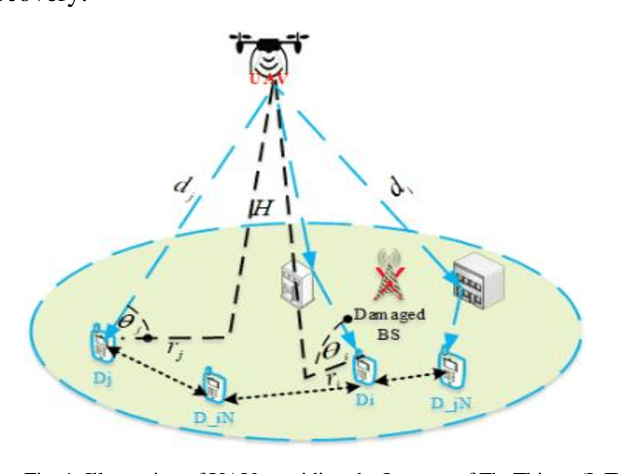
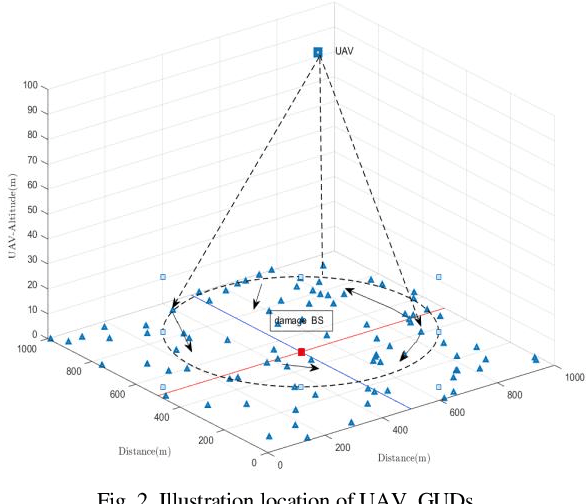
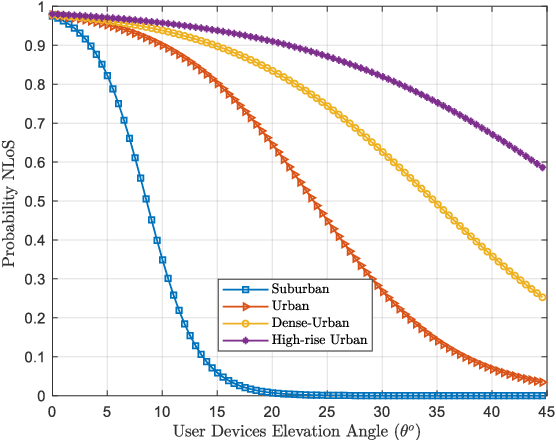
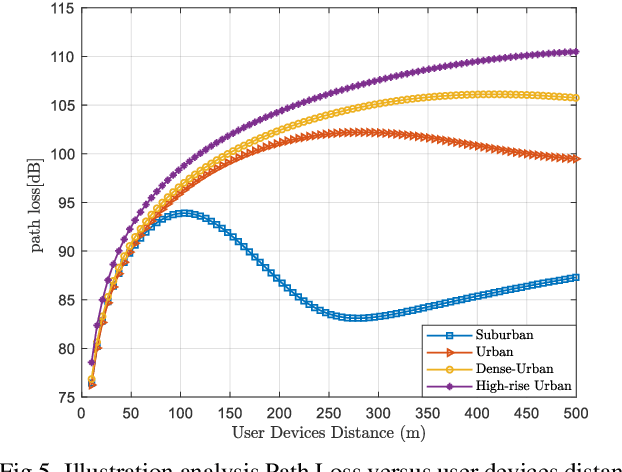
Abstract:Natural disasters such as floods and earthquakes immensely impact the telecommunication network infrastructure, leading to the malfunctioning and interruption of wireless services. Consequently, the user devices under the disaster zone are unable to access the cellular base stations. Wireless coverage on an unmanned aerial vehicle (UAV) is considered for providing coverage service to ground user devices in disaster events. This work evaluated the efficient performance of wireless coverage services of UAVs to provide the internet to fly things to help recover the communications link in a natural disaster in multi environments. The results demonstrate the line of sight, nonline of sight, path loss, and coverage probability for the radio propagation environment scenario. Therefore, the path loss and coverage probability are affected by the user devices' elevation angle and distance in the multi-environment system. The user position's optimum user device distance and elevation angle are also investigated to improve the coverage probability, which could be especially useful for the UAV deployment design.
Real-time Autonomous Robot for Object Tracking using Vision System
Apr 26, 2021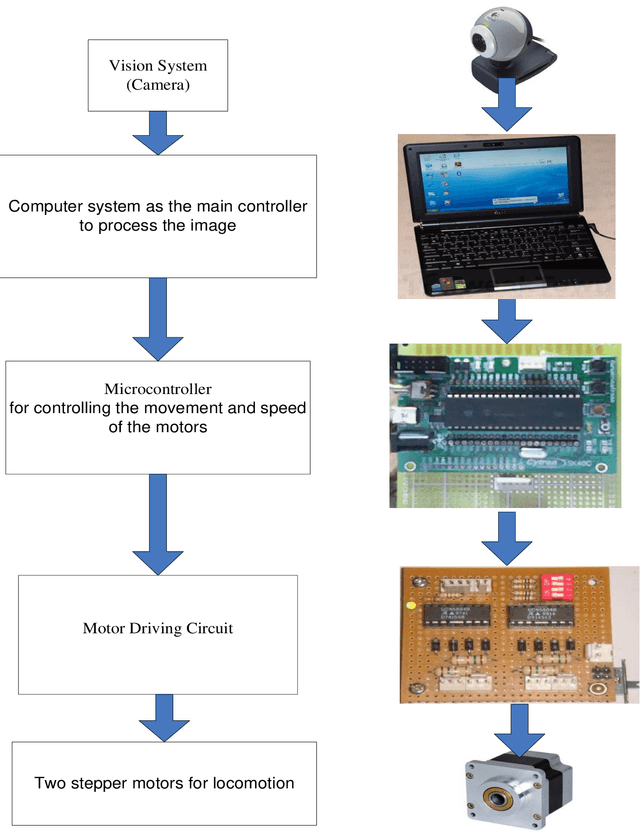

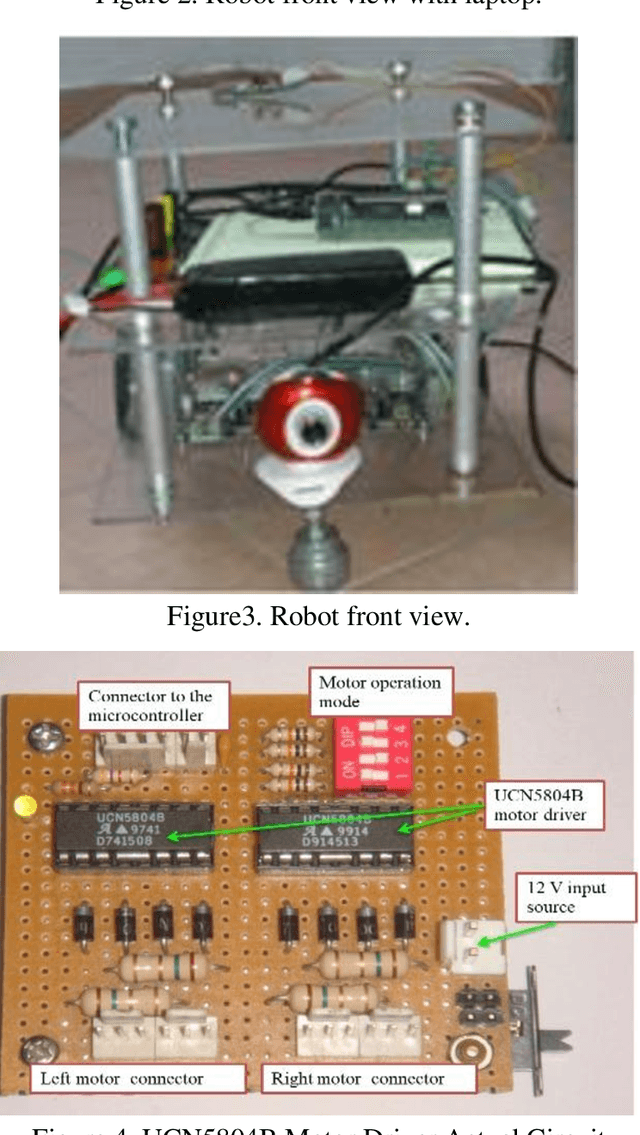

Abstract:Researchers and robotic development groups have recently started paying special attention to autonomous mobile robot navigation in indoor environments using vision sensors. The required data is provided for robot navigation and object detection using a camera as a sensor. The aim of the project is to construct a mobile robot that has integrated vision system capability used by a webcam to locate, track and follow a moving object. To achieve this task, multiple image processing algorithms are implemented and processed in real-time. A mini-laptop was used for collecting the necessary data to be sent to a PIC microcontroller that turns the processes of data obtained to provide the robot's proper orientation. A vision system can be utilized in object recognition for robot control applications. The results demonstrate that the proposed mobile robot can be successfully operated through a webcam that detects the object and distinguishes a tennis ball based on its color and shape.
Unmanned Aerial Vehicle and Optimal Relay for Extending Coverage in Post-Disaster Scenarios
Apr 13, 2021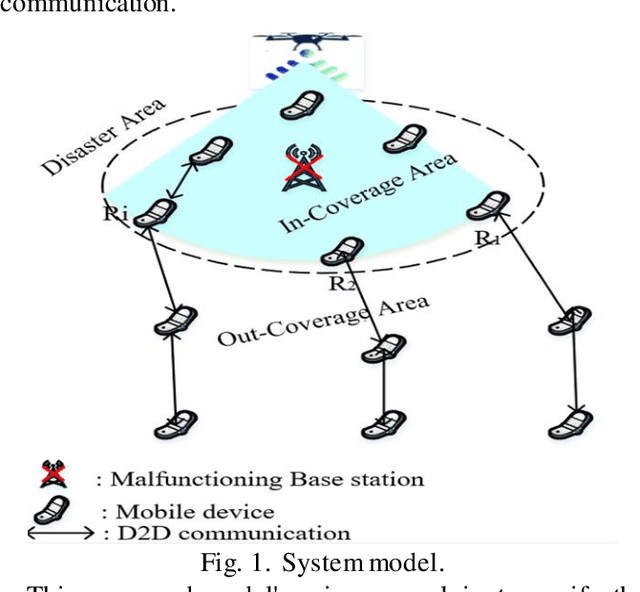
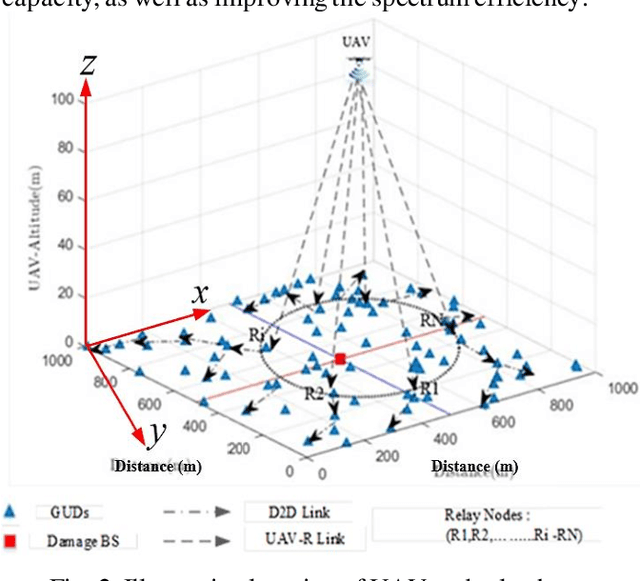
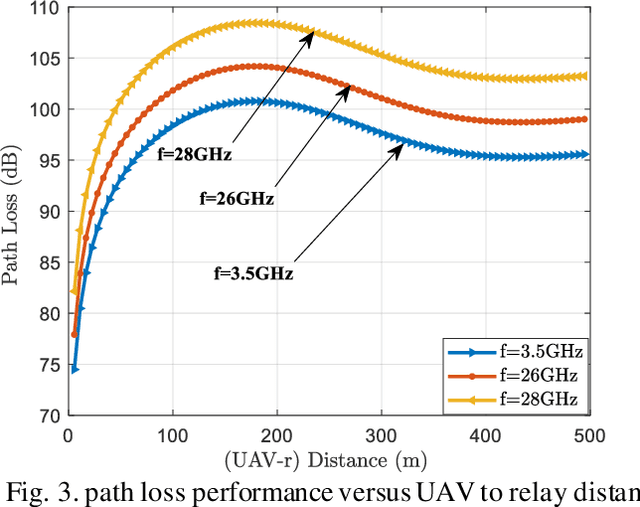
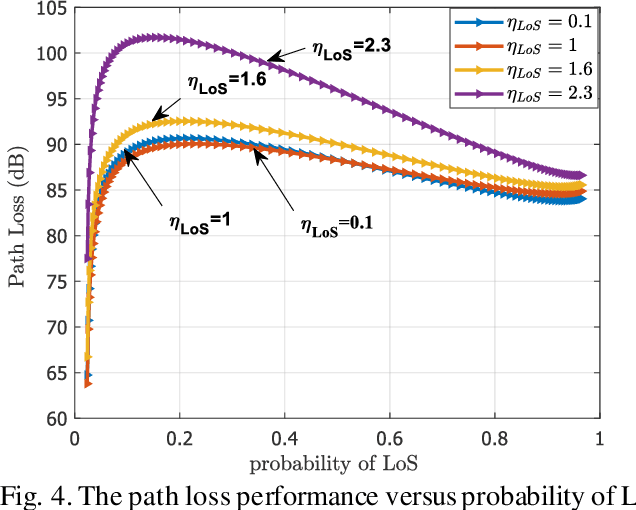
Abstract:The malfunction or interruption of wireless coverage services has been shown to increase the mortality rate during natural disasters. Wireless coverage by an unmanned aerial vehicle (UAV) provides network coverage to ground user devices during and post-disaster events. The relay hops receive wireless coverage and can be forwarded to user devices that are out of coverage allowing reliable connectivity for large-scale user devices. This work evaluates the optimal relay hops performance to improve wireless coverage services and establish connectivity in post-disaster scenarios. The results demonstrate the UAV line of sights understanding to select an optimal relay for improving wireless coverage services. The path loss probability and system capacity were all affected by the user device distance and relay densities. The optimal relay hop distance and the UAV positions static are also investigated to improve coverage likelihood which could be especially useful for UAV deployment design. It is found that the dense relays node in UAV systems enhances the capacity coverage area and energy efficiency by decentralized connectivity through a multihop device to device wireless network.
 Add to Chrome
Add to Chrome Add to Firefox
Add to Firefox Add to Edge
Add to Edge